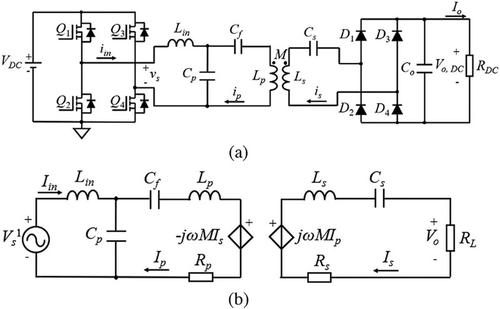当前位置:
X-MOL 学术
›
IET Power Electron.
›
论文详情
Our official English website, www.x-mol.net, welcomes your feedback! (Note: you will need to create a separate account there.)
Component design procedure for LCC-S wireless power transfer systems based on genetic algorithms and sensitivity analysis
IET Power Electronics ( IF 2 ) Pub Date : 2024-03-08 , DOI: 10.1049/pel2.12648 Fabio Corti 1 , Matteo Intravaia 1 , Alberto Reatti 1 , Francesco Grasso 1 , Emanuele Grasso 2 , Alicia Triviño Cabrera 3
IET Power Electronics ( IF 2 ) Pub Date : 2024-03-08 , DOI: 10.1049/pel2.12648 Fabio Corti 1 , Matteo Intravaia 1 , Alberto Reatti 1 , Francesco Grasso 1 , Emanuele Grasso 2 , Alicia Triviño Cabrera 3
Affiliation

|
This paper introduces a novel approach for designing a Wireless Power Transfer (WPT) system with LCC-S compensation. Since WPT systems operate under resonant conditions, even small deviations of the components from the nominal values can result in a significant reduction of the power transferred to the load, and in an increment of the circulating currents, reducing the system efficiency. The design techniques available today in the literature provide a unique combination of passive components capable of transferring a certain power to the load. This is a limitation, because, in practice, there are several combinations that allow reaching the desired output power, but they are usually neglected because they are extremely difficult to compute analytically. For this reason, in this paper, the authors present an innovative design procedure that enables, through a Genetic Algorithm, the identification of multiple feasible combinations of the LCC-S components capable of achieving the desired output power. Moreover, the authors evaluate the effects of the component tolerances on the output power to determine which combinations are more robust to component variations. This task is performed by calculating the probability that a particular combination yields the desired output power, once the tolerances have been considered, following a Monte Carlo approach. This information is utilized to decide whether it is possible to reduce the component quality (worsening the tolerance) without affecting the performance. Finally, an optimal solution granting both low-cost and robustness against component tolerances can be individuated. The proposed design procedure is applied to a case study and validated experimentally.
中文翻译:

基于遗传算法和灵敏度分析的 LCC-S 无线电力传输系统组件设计流程
本文介绍了一种设计具有 LCC-S 补偿的无线功率传输 (WPT) 系统的新方法。由于 WPT 系统在谐振条件下运行,即使组件与标称值的微小偏差也会导致传输到负载的功率显着减少,并导致循环电流增加,从而降低系统效率。目前文献中提供的设计技术提供了一种独特的无源元件组合,能够将一定的功率传输到负载。这是一个限制,因为在实践中,有几种组合可以达到所需的输出功率,但它们通常被忽略,因为它们极难进行分析计算。因此,在本文中,作者提出了一种创新的设计程序,通过遗传算法,能够识别能够实现所需输出功率的 LCC-S 组件的多种可行组合。此外,作者还评估了组件容差对输出功率的影响,以确定哪些组合对组件变化更稳健。一旦考虑了容差,遵循蒙特卡罗方法,通过计算特定组合产生所需输出功率的概率来执行此任务。该信息用于决定是否可以在不影响性能的情况下降低组件质量(恶化容差)。最后,可以个性化一种既具有低成本又具有针对组件公差的鲁棒性的最佳解决方案。所提出的设计程序应用于案例研究并经过实验验证。
更新日期:2024-03-10
中文翻译:

基于遗传算法和灵敏度分析的 LCC-S 无线电力传输系统组件设计流程
本文介绍了一种设计具有 LCC-S 补偿的无线功率传输 (WPT) 系统的新方法。由于 WPT 系统在谐振条件下运行,即使组件与标称值的微小偏差也会导致传输到负载的功率显着减少,并导致循环电流增加,从而降低系统效率。目前文献中提供的设计技术提供了一种独特的无源元件组合,能够将一定的功率传输到负载。这是一个限制,因为在实践中,有几种组合可以达到所需的输出功率,但它们通常被忽略,因为它们极难进行分析计算。因此,在本文中,作者提出了一种创新的设计程序,通过遗传算法,能够识别能够实现所需输出功率的 LCC-S 组件的多种可行组合。此外,作者还评估了组件容差对输出功率的影响,以确定哪些组合对组件变化更稳健。一旦考虑了容差,遵循蒙特卡罗方法,通过计算特定组合产生所需输出功率的概率来执行此任务。该信息用于决定是否可以在不影响性能的情况下降低组件质量(恶化容差)。最后,可以个性化一种既具有低成本又具有针对组件公差的鲁棒性的最佳解决方案。所提出的设计程序应用于案例研究并经过实验验证。



























 京公网安备 11010802027423号
京公网安备 11010802027423号